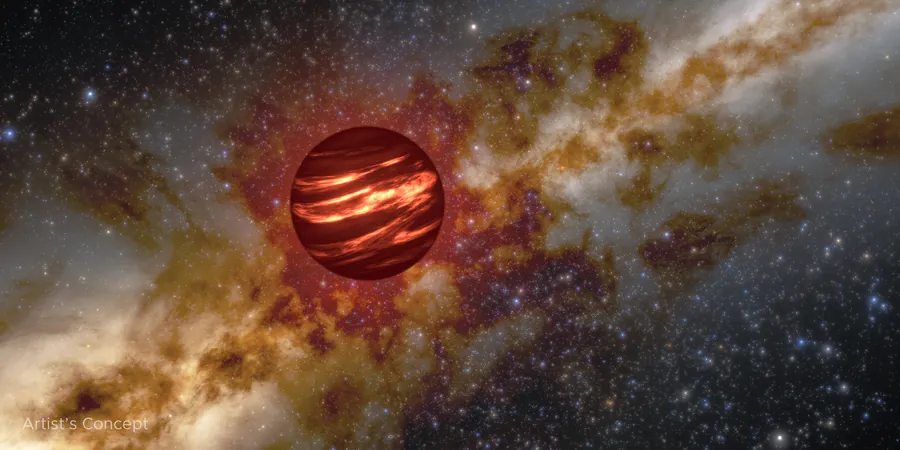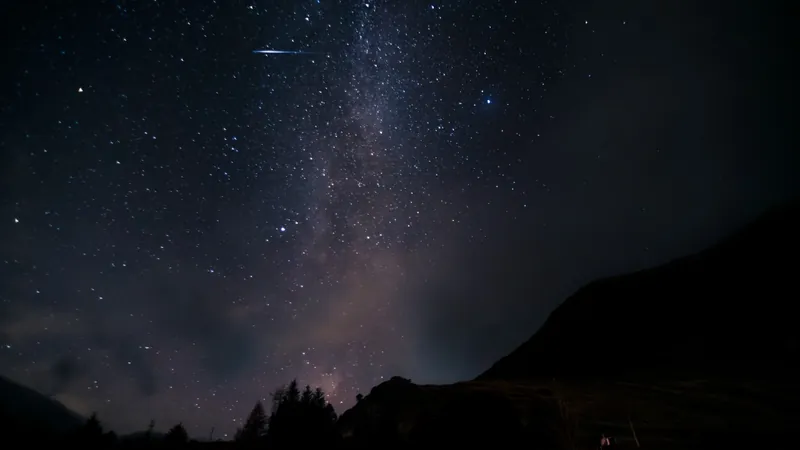
Cosmic Discovery: Brown Dwarf’s Secrets Illuminate Jupiter and Saturn's Mysteries
2025-09-09
Author: Amelia
A groundbreaking finding from NASA's James Webb Space Telescope is shedding new light on the enigmatic atmospheres of Jupiter, Saturn, and beyond. This revelation revolves around a unique cosmic entity dubbed "The Accident," an intriguing brown dwarf that was serendipitously spotted in 2020.
The Peculiar Brown Dwarf: An Astronomical Riddle
Brown dwarfs, straddling the line between stars and planets, are often incredibly challenging to categorize. The Accident has baffled scientists with its strange amalgamation of traits, displaying characteristics of both young and old brown dwarfs. Initially overlooked by conventional detection techniques, its discovery was made possible through the efforts of citizen scientists participating in the Backyard Worlds: Planet 9 initiative using data from NASA’s retired NEOWISE mission.
Unveiling the Mystery of Silicon
The recent study, published in the journal Nature on September 4, focuses on a surprising revelation: the presence of silane (SiH4), a simple silicon molecule, in The Accident's atmosphere. Despite expectations, this molecule had eluded detection in the atmospheres of Jupiter and Saturn, as well as in other gas giants across the cosmos. This discovery marks the first identification of silane in such cosmic objects, potentially unlocking secrets about their chemistry.
Silicon's Hidden Role in Gas Giants
While scientists are confident that silicon exists within Jupiter and Saturn's atmospheres, they suspect it is shrouded in compounds that inhibit its visibility. When silicon binds with oxygen, it forms silicates like quartz, which can create cloud formations reminiscent of terrestrial dust storms. In cooler gas giants, these clouds submerge beneath layers of water vapor and ammonia, hiding silicon from observational methods.
A Glimpse into the Past: Why Silane Thrives Here
The Accident, located about 50 light-years from Earth and formed between 10 and 12 billion years ago, seems to provide a window into the early universe. At its inception, the cosmos was primarily composed of hydrogen and helium, allowing for an abundance of silicon to bond with hydrogen, resulting in silane formation. In contrast, younger celestial bodies are likely to have more oxygen, which readily bonds with silicon, limiting silane's presence.
Broader Implications for Planetary Science
This seemingly accidental find has broader implications for our understanding of atmospheric chemistry in celestial bodies. As researchers explore the unique properties of The Accident, they are effectively laying groundwork for analyzing the atmospheres of potentially habitable exoplanets. Though Faherty emphasizes that the discovery does not indicate life on brown dwarfs, the insights gained could be crucial for future studies of Earth-like planets.
Continuing to Explore the Cosmos
NASA's James Webb Space Telescope continues to be at the forefront of cosmic exploration, offering a finer look at celestial objects that promise to enrich our understanding of the universe. By probing the mysteries of oddities like The Accident, scientists are encountering the delightful unpredictability of the cosmos.
This fascinating intersection of science and accidental discovery could redefine how we view gas giants and their atmospheres, unveiling the intricate tapestry that underpins our universe.









 Brasil (PT)
Brasil (PT)
 Canada (EN)
Canada (EN)
 Chile (ES)
Chile (ES)
 Česko (CS)
Česko (CS)
 대한민국 (KO)
대한민국 (KO)
 España (ES)
España (ES)
 France (FR)
France (FR)
 Hong Kong (EN)
Hong Kong (EN)
 Italia (IT)
Italia (IT)
 日本 (JA)
日本 (JA)
 Magyarország (HU)
Magyarország (HU)
 Norge (NO)
Norge (NO)
 Polska (PL)
Polska (PL)
 Schweiz (DE)
Schweiz (DE)
 Singapore (EN)
Singapore (EN)
 Sverige (SV)
Sverige (SV)
 Suomi (FI)
Suomi (FI)
 Türkiye (TR)
Türkiye (TR)
 الإمارات العربية المتحدة (AR)
الإمارات العربية المتحدة (AR)